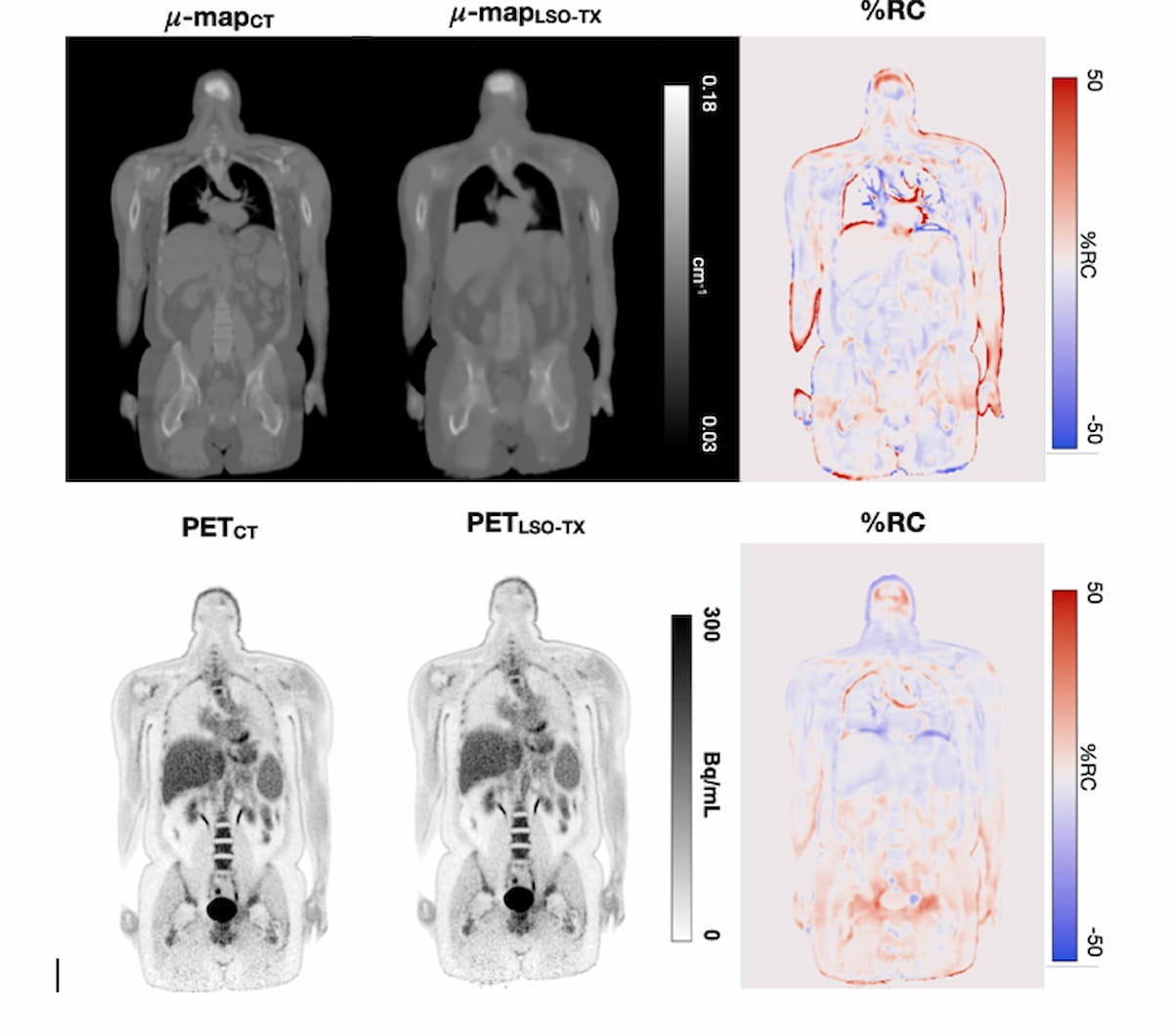SNMMI: Can Ultra-Low Dose PET Supplant the Need for CT Attenuation Correction?
Ultra-low dosing with long axial field-of-view positron emission tomography (PET) scanners facilitates qualitative PET imaging at a more than 50 percent reduction of conventional radiation dosing with PET, according to new research presented at the SNMMI 2024 conference.
The combination of long axial field-of-view (LAFOV) positron emission tomography (PET) scanners with a new ultra-low radiation dosing approach may offer a breakthrough in obtaining qualitative PET imaging without attenuation correction via computed tomography (CT), according to preliminary research findings presented at the 2024 Society of Nuclear Medicine and Molecular Imaging (SNMMI) Annual Meeting.
Noting recent research looking at the use of Lutetium-176 background radiation from some PET scintillators as a transmission source, also referred to as LSO-TX, the study authors compared reconstructed PET images that utilized CT-derived attenuation maps and reconstructed PET images derived from LSO-TX.
The four study participants had 90-minute LAFOV PET scans as well as low-dose CT scans. The researchers said the LSO-TX attenuation maps, enhanced with deep learning, were based on a combination of reconstruction methods utilizing the maximum likelihoods for tomographic reconstruction (MLTR) and reconstruction of attenuation and activity (MLAA).
Here one can see reconstructed PET images (bottom row) and the use of CT- and LSO-TX-based attenuation maps (top row). Researchers said using ultra-low dose imaging with long axial field-of-view PET scanners obviates the need for accompanying computed tomography (CT) scans for attenuation correction. (Images courtesy of SNMMI.)

The researchers noted similar visualization between the CT- and LSO-TX attenuation mapping and the reconstructed PET images derived from both approaches. They found that CT attenuation correction resulted in 0.340 mSv dosing in contrast to 0.153 mSv dosing for LSO-TX.
“This reduction in radiation dose is 50 times lower than the standard PET dose and is comparable to the dose received from a mammogram or a chest CT radiograph,” explained lead study author Hasan Sari, Ph.D., a senior research scientist at Bern University Hospital in Bern and Siemens Healthineers International AG in Zürich, Switzerland.
The study authors noted the average relative change (RC) for the reconstructed PET images was – 3.2 for bones, -0.2 for water-based soft tissue and -1.8 for fat-based soft tissue. Average differences in standardized uptake value (SUV) included -3.0 for cerebral gray matter, 3.3 in the liver and – 4.5 in the descending aorta, according to the researchers.
“Ultra-low-dose protocols have the potential to extend the use of PET scans beyond their current applications and could significantly enhance the utility of this modality in screening studies involving at-risk or healthy subjects, research studies, enhanced treatment response assessments with more frequent follow-up scans, and pediatric scans,” emphasized Dr. Sari.
Reference
1. Sari H, Teimoorisichani M, Pyka T, et al. Ultra-low dose PET imaging in long axial field PET scanners with LSO transmission-based attenuation correction. Presented at the 2024 Society of Nuclear Medicine and Molecular Imaging Annual Meeting, June 8-11, Toronto, Canada. Available at: https://www.xcdsystem.com/snmmi/program/10OD8Tq/index.cfm . Accessed June 11, 2024.
Predicting Diabetes on CT Scans: What New Research Reveals with Pancreatic Imaging Biomarkers
March 25th 2025Attenuation-based biomarkers on computed tomography (CT) scans demonstrated a 93 percent interclass correlation coefficient (ICC) agreement across three pancreatic segmentation algorithms for predicting diabetes, according to a study involving over 9,700 patients.
The Reading Room Podcast: Current Perspectives on the Updated Appropriate Use Criteria for Brain PET
March 18th 2025In a new podcast, Satoshi Minoshima, M.D., Ph.D., and James Williams, Ph.D., share their insights on the recently updated appropriate use criteria for amyloid PET and tau PET in patients with mild cognitive impairment.